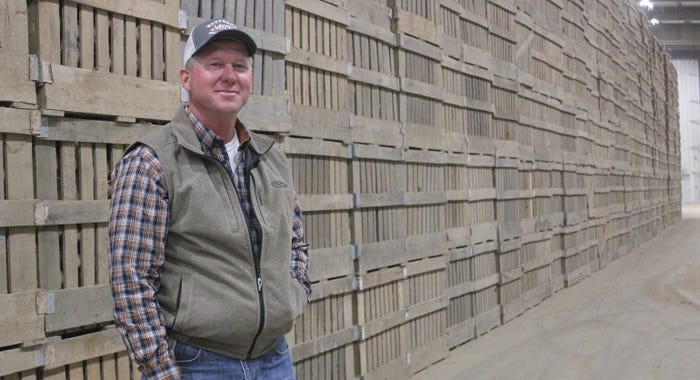
Terris Matthews is the owner of Matthews Ridgeview Farm, the largest sweet potato producer and distributor in Arkansas. Ginger Rowsey
While turkey may be the traditional centerpiece of the Thanksgiving meal, the bird is often upstaged by the side dishes. Dressing, green bean casserole, and of course sweet potatoes. Whether you prefer to eat your sweet potatoes in a casserole alongside the turkey, or in a pie for dessert, (or for both courses), more than likely you’ll be enjoying this Thanksgiving favorite in some form or fashion during the holiday feasting.
But sweet potatoes are not just a holiday food anymore. The Agricultural Marketing Resource Center estimates Americans’ consumption of fresh sweet potatoes has nearly doubled in the past 20 years — that’s not to mention canned and frozen sweet potato products, such as sweet potato fries. Nationally, sweet potato production, which had dropped to just 77,000 acres 30 years ago, now hovers around 160,000 acres.
Terris Matthews, a fourth-generation sweet potato farmer from Wynne, Ark., has seen the impact of Americans’ growing appetite for sweet potatoes. Fifteen years ago, just before sweet potato consumption really started to take off, he and wife, Kim, set out on their own to start Matthews Ridgeview Farms. Since that time, they have expanded their business and grown their storage and packing facility. Not only are they now the largest sweet potato producers in Arkansas, but they also lay claim to one of the most highly automated sweet potato packing facilities in the nation. Annually, they sell more than one million bushels of sweet potatoes to major retailers.
We visited Matthews in early November. Harvest was complete, and his warehouse facility was bustling as more than 80 employees worked to wash, sort and package sweet potatoes to fill the holiday demand.
“But there’s really not a slow time for us anymore,” he points out as we tour his 60,000 square foot warehouse. “People eat sweet potatoes year-round, now.”
Does he have a secret to success, besides long hours and hard work?
“We’re committed to being on the leading edge of sweet potato production and we look at everything to keep us on the cutting edge,” he said.
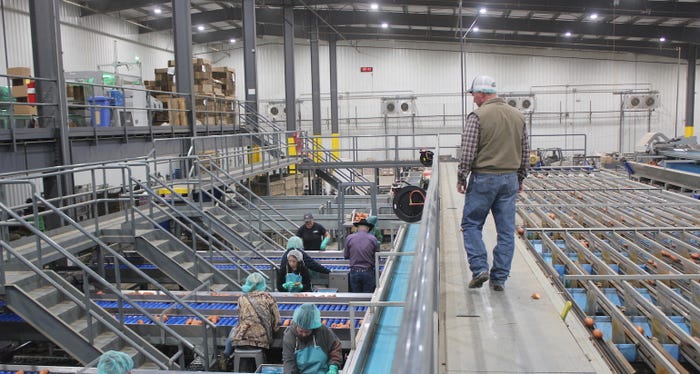
Finding the right variety
Matthews works closely with the LSU AgCenter’s Sweet Potato Breeding Program. As one of only three active breeding programs in the United States, LSU serves producers across the nation. The program has developed some of the most popular varieties in the market, including Beauregard, Evangeline, Orleans and Bayou Belle.
Breeding sweet potatoes comes with its own set of challenges, according to Don La Bonte, sweet potato breeder with the LSU AgCenter.
“I always say sweet potato production is a combination of science and art. It is not just about raw tonnage. It must also look attractive, it has to taste good, it needs to have the right color to appeal to buyers,” said La Bonte. “Finding a variety with all the traits that farmers, retailers and consumers want can be challenging,” La Bonte said. “Few people see all that is invested to find the next great variety.”
La Bonte said the start to finish process of developing and releasing a new sweet potato variety can take up to seven years. It begins at the LSU Sweet Potato Research Station where he annually screens around 30,000 true seeds. After several years, entries that make the cut are moved to on-farm trials.
“Growers like Terris have a sharp eye for what they’re looking for, and that’s how we begin to learn if a variety has economic value,” La Bonte said.
On-farm research gives La Bonte and a better picture of plant yield across multiple locations as well as storage longevity.
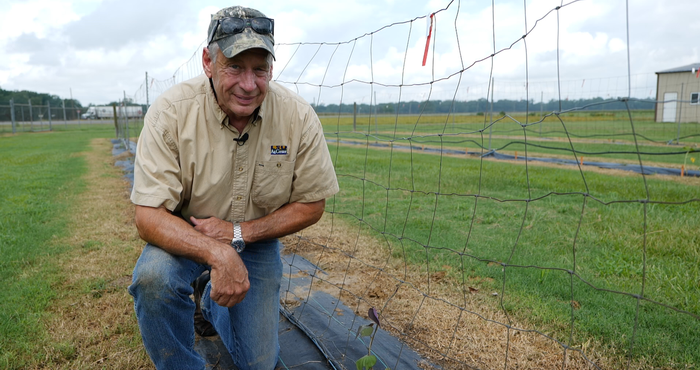
Even if growers consistently like what they see, it typically takes another few years to be able to grow the variety commercially, but an advanced line that has La Bonte particularly excited is LA 18-100.
“LA 18-100 is one of my favorites. It has continued to look great in trials. Tastes great. It has a nice, deep orange flesh. I expect we’ll have a decision to release this line in 2023,” he said.
Sweet potato specialities
La Bonte says most Midsouth growers are “purists,” growing the orange fleshed Beauregards and Orleans almost exclusively, but sweet potatoes are becoming more diversified.
“We see more value-added, consumer-friendly sweet potato products, like sweet potato soup, canned products, chips, drinks and, of course, fries, and each one of these products can require a unique variety,” La Bonte said.
There is also growing interest in white and purple-fleshed sweet potatoes.
“We’ve been working on purples since the early 2000s, which tells you how long it takes to get a really good-looking variety, but I think we’re there with a few of our purple advanced lines,” La Bonte said. U.S. purple-fleshed sweet potato sales are “meaningful,” according to La Bonte, and could serve as a new market for growers.
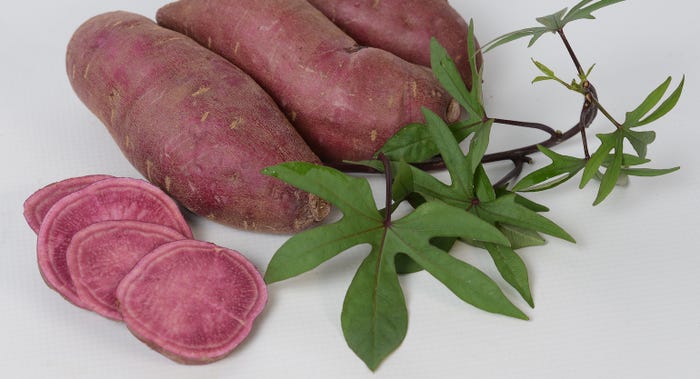
While Matthews is one of those Midsouth purists who counts Beauregard and Orleans as his top varieties, he said he’s willing to grow any variety for which there is customer demand.
“Niches are hard. You put a lot in and get little out. But I’m a yes man. If a customer wants it, we’ll try it at least once.”
He has seen consumer preferences for sweet potato size change.
“Nobody wants a jumbo potato anymore, except for processors,” he said. “We’re seeing a lot of growth in sales for smaller sweat potatoes that come pre-washed and ready to steam in a bag.”
Growing, storing and packing
Finding great performing varieties and good seed quality is the first step in satisfying Americans’ expanding appetite for sweet potatoes, but producing a quality product doesn’t end there. At Matthews farm, planting begins in mid-March when small root potatoes are bedded and covered in plastic to keep them warm. In April, the plastic is removed, and later slips are cut and transplanted.
Like most farmers in the Midsouth, Matthews faces issues with Palmer amaranth and morning glory control. He fights root-knot nematode, but fortunately the guava root-knot nematode that has caused problems in North Carolina has not made its way to his farm.
Harvest typically runs from September to October. Matthews said these labor-intensive months require 175 additional laborers.
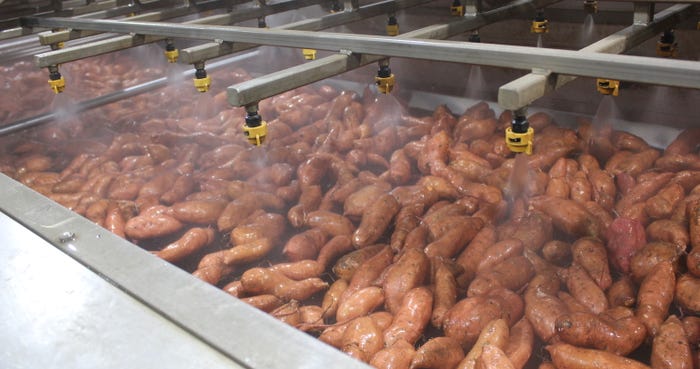
After sweet potatoes are dug on the Matthews farm, they are placed in 1,000-pound wooden bins and stacked in climate-controlled storage facilities to begin the curing process.
“When we first bring them in, we heat them and then cool them back down to begin curing,” Matthews said. “This turns the starches back to sugars and makes the potatoes taste sweeter. We can also add moisture to keep the potato fresh.”
Sweet potatoes cure for up to one year in storage. As orders come in, they are washed multiple times, dried and then further cleaned and inspected by hand before entering an automatic singulator that lines up and sorts out potatoes by size and density. They are again sorted by hand before being packaged.
2021 season
Growing and packaging sweet potatoes was not without challenges this year. Matthews says he saw almost every aspect of production costs go up.
“The price of paper boxes has gone up $0.25 a piece from this time last year,” said Matthews, who uses close to one million boxes each year. “Pallets are up. Last year it cost $0.15 to put a box on a pallet. Now it’s more like $0.22. That’s a hidden cost that quickly adds up.”
“Costs have risen for all of our packaging supplies, freight and labor. But our prices are still the same … at least for now.”
Despite rising costs, Matthews considers 2021 a good year.
“It wasn’t a bad year, not a bin buster, either. Just a good, average year, and I’ll take that. We’ll make a little money. You don’t go broke making money,” he said.
Will he be eating sweet potatoes for Thanksgiving? Absolutely!
“I eat sweet potatoes four to five times a week. I love them. I’m definitely in the right business,” he adds.
About the Author(s)
You May Also Like






